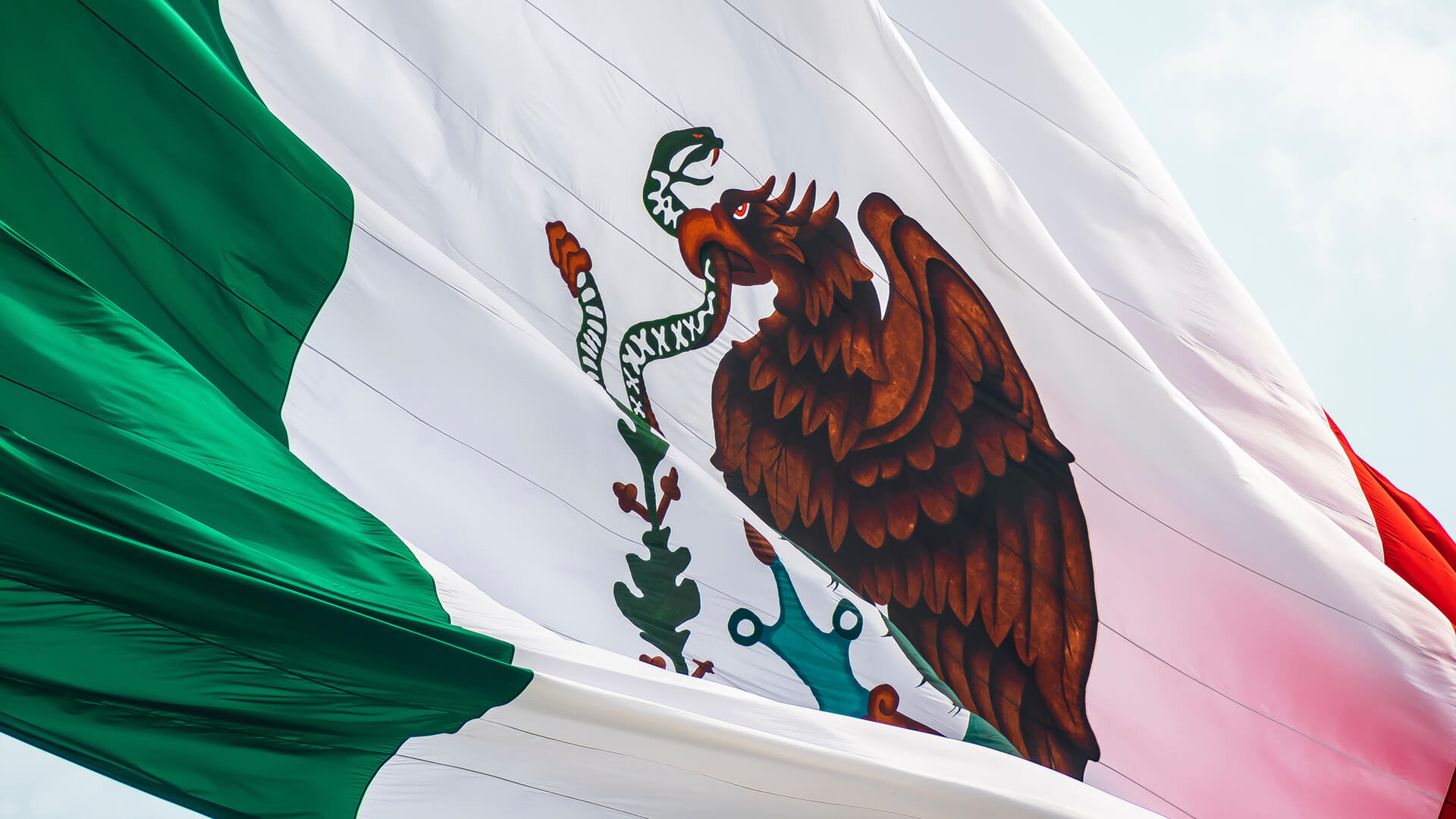Read the other installments in this series:
The CRF Files, Introduction
CRF Files, Part I: The Future of Korea
The Cutting Room Files, Part 2: The Future of Mexico
The Cutting Room Files, Part 4: The Future of Japan
The Cutting Room Files, Part 5: The Future of the United Kingdom
The Cutting Room Files, Part 6: The Future of China
The Cutting Room Files, Part 7: Europe
The Cutting Room Files, Part 8: American Politics
by Peter Zeihan and Michael N. Nayebi-Oskoui
This piece is part of the Cutting Room Files, portions of the upcoming Disunited Nations text that were cut for length. Disunited Nations is available for pre-Order now on Amazon.com, Harper Collins, and IndieBound.
Canada is… not a normal place.
Everything from its settlement patterns to its defense strategy to its national politics to its economic structure is wildly different not just from the United States, but from every other country on the globe. Until now that has not had an overly negative impact upon Canadian-American relations, but times are changing (and from the Canadian point of view, not for the better). To really understand recent shifts, we need to start not in Canada, but in Mexico.
It comes down to demography.
Mexico has a more-or-less standard demographic profile. Lots of children, a good number of young workers, fewer mature workers and very few retirees. Chart it out, children on the bottom and retirees on the top, and courtesy of simple mortality you get a pyramid.

For purposes of the North American market, there are two big takeaways here. First, Mexico is hungry. All those young workers having lots of kids means the country is a never-ending festive parade of spending on education and food and diapers and homes and cars. Second, Mexico isn’t all that skilled. This is less an indictment of Mexico’s educational system, and simply that people below age 40 don’t have all that much experience in their chosen professions. It makes Mexico excel at relatively low-value-added manufacturing and assembly, but the Mexicans are forced to leave the high-value-added stuff and design to others.
For the Americans, this makes Mexico the perfect complement. Its people are ravenous for American exports, the Mexican work force meshes nicely America’s more high-value-added workers, and for the most part the two countries do not compete head-to head. No wonder that Trump’s rhetoric on Mexico has evolved so strongly over the course of the past two years from issues of trade to issues of identity and migration.
Simply put, from American point of view, the Mexican demography is the demography of the perfect partner.
Canada’s is not.

Canada’s population bulge isn’t among the young workers who complement the American economic structure, but instead among the mature-worker demographic who compete. A demographic bulge in the 40-65 bracket means Canada is super-saturated with high-skill workers. This extra supply depresses the cost of skilled labor within the Canadian system, which has a similar impact upon the price of the goods the country’s skilled labor force produces.
Even worse, the lack of 20- and 30-something Canadians means Canada cannot even consume its own production. It must dump that production on foreign markets, and proximity alone means that some 75% of it goes to the United States. Economically, Canada isn’t a partner. It is a competitor, and that’s before one considers the Canadian tendency to subsidize industries as unrelated as dairy and aerospace and timber and electricity.
In a time when the Americans are pulling back from the global system and rewriting all their trade relationships, this alone would be cause for great concern in the Great White North. But the Canadian-American economic mismatch is only the first problem.
The second problem in Canadian-American relations is the Americans are having a change of heart about their northern neighbor not simply in economic terms, but overall.
When the Trump administration started its whole the-world-is-screwing-us-and-we’re-going-to-forcibly-renegotiate-all-trade-deals campaign, the Canadians took it as an opportunity to make demands of the United States. That clearly didn’t fit with TeamTrump’s understanding of what was supposed to be going on. Why in the world would the Canadians believe they have leverage over the government who controls the only market that matters to Canada, and global finance, energy and sea lanes to boot?
Canada’s confidence dates back to the Cold War. The flight path for the feared Soviet nuclear missile strike on the United States would have been over Canada. There was no version of American security that would not by default also guarantee Canadian security. The Canadians could have been security free-riders if they had chosen to, but to their credit they have fought and died alongside American soldiers in nearly every overseas endeavor the U.S. military has undertaken.
That does not mean the Canadians did not use their leverage, they just used it on issues of trade rather than security, leveraging their strategic position to gain concessions on market access for their products. The Canadians had a strong hand and they played it well. Repeatedly. Those trade victories were all folded into the original NAFTA accord back in the early 1990s.
It all fit with the times. The whole concept of the American-led global Order was that the Americans would create and subsidize a security and trade rubric to induce countries to join them in the fight against the Soviets. Guns-for-butter was the rule of the era. Canada’s position meant it had more to offer, and granting Ottawa some extra trade concessions for its cooperation was a price the Americans were eager to pay.
Times change.
Canadian negotiators resisted the Trump administration’s trade goals, thinking Canada’s leverage still existed. But with the Cold War over, the Americans no longer fear Russian attack. Canada is now just another country. Once the Americans had finalized NAFTA2 with Mexico, they turned to Canada and issued a simple ultimatum:
Mexico’s market is growing. Yours is not. Your market is protected. Mexico’s is not. The Mexican labor force is complementary to ours. Yours is not. We have a deal with the country that matters, and that isn’t you. We are leaving NAFTA. You know our terms. Take them or leave them. We are moving on.
In a single searing moment of revelation, everything that had guaranteed Canada leverage over America, everything that granted Canada a place in the world, everything that had generated any meaningful international influence, had evaporated. Canada capitulated within days and signed on for NAFTA2.
All things considered, as emotionally crushing and economically damaging as a forced rejiggering of Canadian-American relations will be, it could be (a lot) worse. Canada is very close to the top of a very short list of countries that the Americans have positive feelings for. Will the Canadian ego and economy suffer under NAFTA2? You betcha. But Canada will still enjoy privileged, security-risk-free access to the American market. In a post-Order world precious few countries can claim the same. Canada may limp, but it will still be able to walk.
Unless the third issue completely overturns the Canadian system from the inside.
Again, Canada is not a normal place. Unlike the United States where the states and federal government exercise roughly equal amounts of power, in Canada the provinces are preeminent and often have the ability to block federal policies they do not like. The country didn’t even get its first comprehensive internal free trade agreement until 2017.
As such, the provinces of Canada function less like components of a common country, and more like a loose clutch of independent countries which compete – oftentimes furiously. That would be problematic enough if the provinces shared a common demographic base. That, they do not.
Quebec is as vitriolically Francophone as the Maritimes are Anglophone. A huge chunk of the population of Toronto is South Asian, while East Asians tend to be overrepresented in Vancouver. The Prairies are as white bread as America’s upper-Midwest. These splits at least partially explain the seemingly never-ending drama of Quebecois separatism, but it is the intersection of demography and economics where the real problems erupt:
The Maritimes’ economies crashed decades ago and its subsequent “recovery” has been anemic at best. Now those provinces have all aged into mass retirement making them de facto wards of the national government. Mighty Quebec is only a few years behind, and is making the transition to demographic basket case right now. Both British Colombia and Ontario are no more than five years behind Quebec. A big piece of the BC economy is serving as the gateway to Asia, and the Trump administration’s trade war is likely to enervate those links. Even worse, the NAFTA-integrated manufacturing and agriculture that makes Ontario and Quebec hum were sectors that specifically benefited from NAFTA1, and which now face far steeper competition from the United States and Mexico under NAFTA2. More specifically, Quebec’s aerospace company, Bombardier, is both one of the most heavily subsidized in the world and is linked into Airbus – a firm that is both the target of extensive American tariffs and one whose fate is locked up in the Brexit drama.
Functionally, that restricts economic dynamism to the demographically young provinces of Alberta and Saskatchewan, a pair of entities whose economies depend upon old-school oil and natural gas production. For years now, funds transfers from the pair – quintuply so from Alberta – to the center is what has enabled Canada to enjoy its much-lauded social welfare state.
That’s not the end of the story, but instead just the beginning.
Canada’s leader is one Justin Trudeau, a scion of a powerful family. Justin’s father, Pierre, was a force of nature. Love him or hate him, everyone acknowledged that Trudeau the Senior was a commensurate politician. Dude could work a room, and it isn’t much of a surprise that he served as Canada’s prime minister for 16 years.
Justin, in comparison, isn’t a particularly smooth operator. His rise to the prime minister’s chair five years ago largely occurred because of circumstance. Many Canadians had tired of a decade of conservative minority rule under the somewhat curmudgeonly Stephen Harper. A coalition of liberal players banded together around the Trudeau name and managed to carry an election.
In that environment, Trudeau the Younger fit the bill. He isn’t very bright, his French is on the weak side, his past work experience was at best mediocre, but he is young and so very very pretty. In a world of social media and an increasing split between modern liberal values and traditional economic sectors, that proved enough.
Under Justin Trudeau’s rule Canada has… gotten by. There have been no disasters, but few serious new policies. Really, Justin Trudeau’s administration has only shifted two things.
First, it has steadily centralized power in Ottawa, making it easier to drain cash from Alberta and Saskatchewan both to balance out the slipping economic performance of the rest of the country, and to push this or that pet policy. Second, the pet policy of the moment is a fairly aggressive environmental program that has proven popular with Justin Trudeau’s base. That program has put ever-more-stringent restrictions on the economies of Alberta and Saskatchewan – specifically on the sectors that make the Canadian national budget possible.
Justin Trudeau’s lackluster performance has cost him. His Liberal Party has been ejected from parliaments in Alberta, Saskatchewan, Ontario and some of the Maritimes in favor of the conservatives; in BC in favor of the left-leaning NDP and Greens; and in Quebec in favor of more nationalist sentiments who are furious with his capitulation to the Americans in NAFTA2.
Within the Liberals, the future isn’t all that bright either. Aside from the Trudeau name, the one characteristic that Justin inherited from his father is the charisma necessary to suck all the air out of the room. Justin is such a big presence that there is no next-generation of young leaders working their way up through the Liberal Party ranks. When Justin falls, so too will the party.
Fast forward to this week.
The Canadians voted in national elections October 21. Justin Trudeau’s Liberals were not exactly gutted, but they lost a lot of seats ending up with just 157, thirteen shy of what’s necessary to form a majority government. That will force the Liberals to rely upon support from the Greens (whose primary concerns are climate change policies) and the NDP (who are like a more math-challenged version of the Greens).
For Canada as a whole, this courts disaster.
Political sentiment in Alberta and Saskatchewan turned sharply anti-Green and anti-Trudeau years ago. The Albertans and Saskatchewanians assert the Greens, the NDP and the Trudeau government are actively conspiring to stymie any and all efforts to get Albertan and Saskatchewan energy exports to the wider world. The Greens and NDP openly say they do, with anti-Albertan policies in the one province they control – British Colombia – having reached the point that BC and Alberta have a hot little inter-provincial trade war going. The Trudeau government attempts to be at least a bit circumspect on the issue, but under Justin Trudeau’s rule construction has yet to begin on a single cross-province pipeline.
Legally, there is an excruciatingly painful route forward. Quebec’s on-again, off-again independence spasms firmly established that Canadian provinces have the right to leave Canada. Paths to secession have been approved – at least in theory – by both the Canadian parliament and the Canadian Supreme Court. We are approaching the witching hour.
There is no modern Canada without Albertan and Saskatchewan financial strength, and there is no Albertan and Saskatchewan financial strength without the two provinces’ energy sectors. Now, with the Liberals needing Green/NDP support to rule, the already-deep political split is taking on more ideological, more hostile overtones.
The vote breakdown is not encouraging. In Monday’s elections the Liberals lost every seat they previously held in both Alberta and Saskatchewan. In an echo of America’s 2016 presidential elections, the opposition Conservatives actually won the popular vote, but because of Canada’s equivalent of America’s electoral college they earned 25 fewer seats than the Liberals. Further mirroring America’s more recent political evolutions, Justin Trudeau claimed a “clear mandate” for stricter climate-change-related policies – an assertion positively Trumpian in its ability to creatively reinterpret the facts on the ground.
We are likely to see two things over the course of 2020.
First, the new federal political alignments are the absolute worst-case scenario for Alberta and Saskatchewan. They have already tried and failed – horribly – to renegotiate their financial relationship with Ottawa, and now they can look forward to ever harsher restrictions on their economic capacity paired with ever more robust siphoning of their wealth to the Canadian center. The formal, open, public debate on secession begins now.
Second, the Americans are likely to take both notice and action.
In the War of 1812 Canadian colonials burned down the American capital. In the war’s aftermath, realizing the Americans would be jonesing for revenge, the Canadians carried out what has arguably been the most successful rebranding effort in history, from trigger-happy arsonists to polite, cuddly socialists.
That effort enabled Canada to avoid American wrath. Later, Canada maintained a bit of protection due to its status as part of the British Empire. In the interwar period the U.S. had bigger fish to fry at home, what with the Great Depression and all. Post-World War II the Americans’ need to maintain the global Order meant that Canada, for all its inconsistencies, was under American protection – which included protection from America.
The Canadian system is splitting along provincial, economic, demographic and ideological lines, and there is no one in the Trump administration who likes Justin Trudeau personally, ideologically or politically. Add in a now-unrestrained America, an America who sees Canada as a competitor, an America who sees the Canadian government as a mix of annoying and ungrateful and self-righteous, and a complete role-reversal is fully in play. Unless the Canadians can get their shit together, it will be eeeeeeasy for Washington to start cutting deals with individual Canadian provinces to hammer preexisting wedges ever-deeper into the Canadian system.
Alberta has the means and motive to destroy Canada. Washington has the means and motive to destroy Canada. And the likely format of the new Trudeau government is providing the opportunity.















